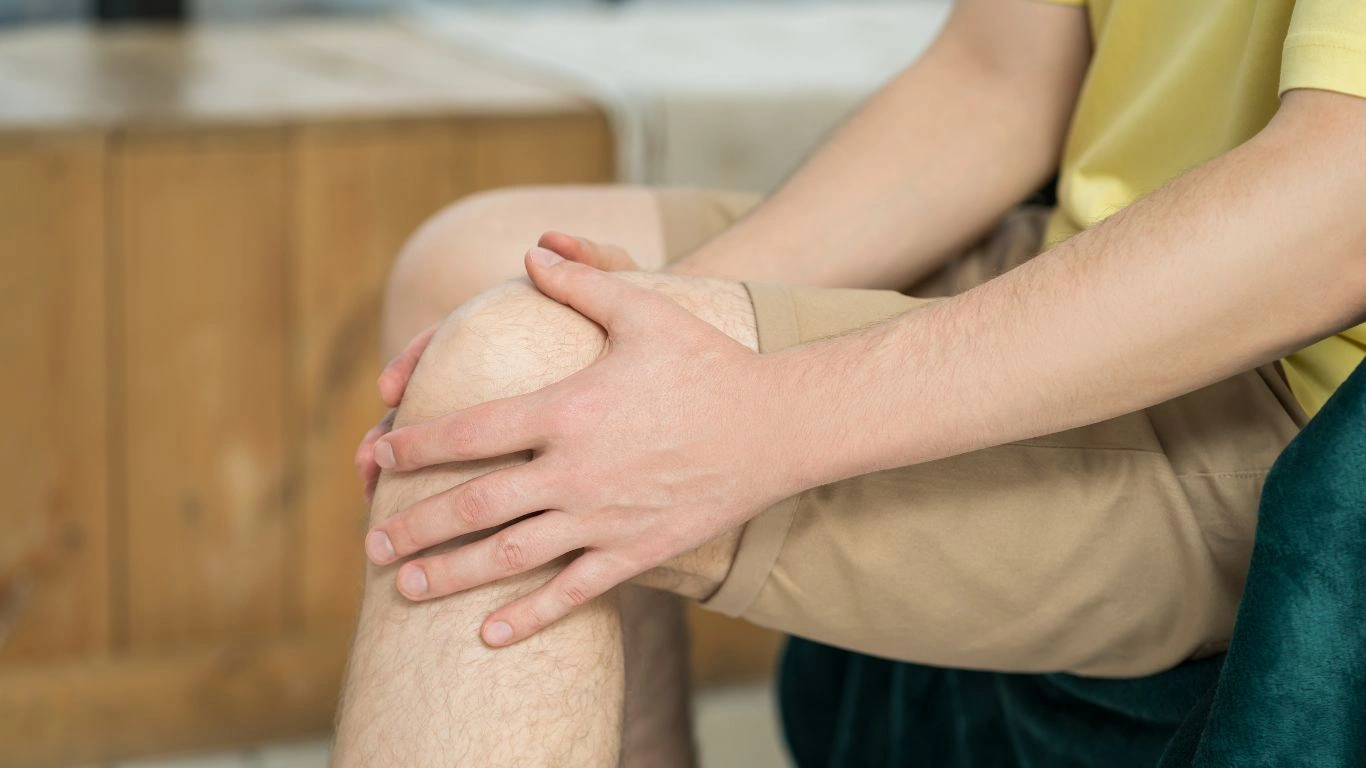Proven Ways to Manage Arthritis Without Prescription Drugs Fast
Living with arthritis doesn’t always mean jumping straight into prescription medications. As a Rheumatology nurse practitioner, I’ve worked with countless patients looking for more natural options. So if you’re wondering how to manage arthritis without prescription drugs, you’re definitely not alone. Over the years, I’ve seen firsthand how powerful lifestyle adjustments, diet, and some old-school wisdom can be. Let’s dive into it—without sounding like a textbook, I promise!
Understanding Your Body and Your Arthritis

Before you can manage arthritis naturally, you’ve gotta know what you’re working with. Arthritis isn’t just one condition—it’s a whole umbrella. I’ve had patients who thought their creaky knees were the same as their neighbor’s rheumatoid arthritis. Nope. Not even close. There are over 100 different types, with osteoarthritis and rheumatoid arthritis being the most common I see in clinic.
Getting a proper diagnosis is key. That means bloodwork, imaging, and a good ol’ fashioned exam. If you’re skipping meds, you really need to be in tune with what’s going on inside those joints so you can take the right approach.
Why Natural Management Might Be the Right Fit
There are a bunch of reasons people steer clear of prescriptions—side effects, long-term risks, or just a desire to do things more holistically. Some of my patients joke that their medicine cabinet looks like a mini pharmacy. Sound familiar?
Prescription meds have their place (trust me, I prescribe them), but they’re not always the whole answer. A solid natural strategy can sometimes keep symptoms manageable, delay disease progression, and honestly, help you feel more in control.
Move It or Lose It: The Role of Exercise

Okay, I know the last thing you want to hear when your joints feel like rusty hinges is “go work out.” But movement is so important. I’ve seen patients who start slow—literally just walking to the mailbox—and gradually build up to yoga or swimming.
Best Types of Movement for Arthritis
- Water aerobics: Less impact on your joints but still gets the heart pumping.
- Gentle yoga: Great for flexibility and calming that stress (which, yes, can make arthritis worse).
- Walking: Simple, free, and surprisingly effective.
- Physical therapy: I often refer patients here when they need personalized guidance.
One of my patients with knee osteoarthritis started doing tai chi three times a week. Not only did his balance improve, but he also reported less stiffness in the mornings. It’s these little shifts that really add up.
Eat to Beat Inflammation

Food is medicine—no joke. I’ve had patients who cleaned up their diet and saw major changes in joint pain. The trick is knowing which foods fuel inflammation and which ones fight it.
Anti-Inflammatory Powerhouses
- Fatty fish: Salmon, sardines, and mackerel are packed with omega-3s.
- Leafy greens: Think kale, spinach, and swiss chard.
- Berries: Blueberries and raspberries are loaded with antioxidants.
- Olive oil: A staple in Mediterranean diets for good reason.
I always tell my patients to imagine their grocery cart like a rainbow. The more colorful, the better. One woman I worked with ditched processed foods, started meal-prepping with her daughter, and not only dropped a few pounds but felt way less achy within weeks.
What to Cut Back On
- Sugar: Sorry, but it’s a big inflammation culprit.
- Refined carbs: White bread, pasta, pastries—ditch ’em or swap for whole grains.
- Red meat: Especially the processed stuff like bacon and hot dogs.
Just tweaking your diet can feel overwhelming at first—I get it. Start small. Maybe swap soda for green tea or add a handful of walnuts to your salad. It doesn’t have to be all or nothing.
Supplements That Can Support Joint Health

Now, let’s talk about supplements—because honestly, there are a few that I regularly recommend to my patients who want to know how to manage arthritis without prescription drugs. Supplements can be a helpful bridge, especially if you’re not ready for medication or want to boost your natural routine.
That said, not all supplements are created equal. I always tell people: if you’re grabbing the cheapest bottle off the drugstore shelf, you might just be buying expensive pee. Look for quality brands with third-party testing—your joints deserve better than filler-loaded mystery capsules.
Supplements Worth Considering
- Turmeric (Curcumin): This golden spice is anti-inflammatory gold. One of my patients swears by her morning turmeric latte.
- Omega-3s: If you’re not a fan of fish, omega-3 supplements are a solid option. They help reduce joint stiffness and swelling.
- Glucosamine & Chondroitin: These are oldies but goodies—especially for osteoarthritis. Results vary, but some people really notice a difference.
- Vitamin D: Deficiency is common, especially in folks with autoimmune types of arthritis. It’s worth checking your levels.
- Magnesium: This mineral helps with muscle relaxation and can ease joint tension—super useful if arthritis makes you stiff.
Quick tip: always check with a healthcare provider (yes, even me) before mixing supplements with other treatments or meds. Natural doesn’t always mean risk-free.
Mind-Body Approaches That Actually Work

When I first started practicing, I’ll admit I was a little skeptical about things like meditation and acupuncture. But after seeing patients come back glowing after their sessions—and telling me their pain was more manageable—I had to eat my words.
The mind and body are more connected than we give credit for. Stress can absolutely crank up your pain levels. You’ve probably noticed it yourself—more stress, more stiffness. It’s no coincidence.
Mind-Body Tools to Try
- Meditation: Just 10 minutes a day can lower stress hormones that make inflammation worse.
- Deep breathing exercises: Try box breathing or guided breathwork. Simple but surprisingly calming.
- Acupuncture: There’s growing evidence that it can help with chronic pain. I’ve had several patients who found real relief through regular sessions.
- Massage therapy: Gentle, arthritis-friendly massage can increase circulation and reduce pain.
- Cognitive Behavioral Therapy (CBT): Especially helpful for people who struggle with chronic pain and anxiety around their symptoms.
One of my favorite stories? A woman in her 60s with RA who started daily journaling, light yoga, and meditation. Her flares didn’t go away completely, but she told me they felt “less scary” and easier to ride through. That’s a win in my book.
Creating a Joint-Friendly Home

Something a lot of people overlook is how much your physical space can either support or sabotage your joints. I’ve walked patients through basic home adjustments that made their daily lives so much easier—no fancy gadgets required.
Simple Changes That Make a Big Difference
- Ergonomic tools: Think jar openers, wide-handled utensils, and lightweight cookware.
- Supportive chairs: Look for chairs with good lumbar support and padded armrests. Standing up shouldn’t feel like a workout.
- Step stools: If reaching causes shoulder pain, keep things at waist height.
- Grip-friendly fixtures: Lever handles instead of knobs make life easier on the wrists.
- Anti-fatigue mats: A must if you’re on your feet a lot, especially in the kitchen or bathroom.
One of my longtime patients—a retired carpenter—ended up retrofitting his entire kitchen with arthritis in mind. Pull-out shelves, soft-close drawers, and no bending down to find pots and pans. His wife said it changed both their lives.
Sometimes it’s the smallest tweaks that keep pain from taking over your routine. And being proactive about your environment shows your joints you care—even if they’re being a little high maintenance.
Sleep, Rest, and Listening to Your Body

If there’s one thing arthritis has taught both me and my patients, it’s that rest isn’t optional—it’s essential. I’ve seen folks try to “push through the pain,” thinking they’re being tough, only to end up in a full-blown flare. Learning to rest without guilt? That’s real strength.
Managing arthritis naturally means tuning in to your body’s signals—and respecting them. One woman I work with said she finally gave herself permission to nap mid-day. It changed her whole outlook on managing chronic pain. Sometimes the best medicine is simply sleep.
Tips for Better Rest
- Stick to a schedule: Going to bed and waking up at the same time helps your body establish a rhythm.
- Supportive bedding: A good mattress and pillows that support painful joints are game-changers.
- Wind-down rituals: Try stretching, warm baths, or magnesium lotion before bed.
- Limit screen time: That blue light from your phone or TV? It’s not doing your sleep any favors.
Sleep deprivation increases inflammation—it’s science. So yes, getting solid sleep is another piece of the puzzle when thinking about how to manage arthritis without prescription drugs.
Building a Support System

Here’s something I remind every newly diagnosed patient: arthritis is invisible, but you shouldn’t feel like you have to go through it alone. Having a community—whether it’s your partner, your best friend, or a Facebook group—makes a huge difference.
I remember one gentleman who joined a local walking group for folks with joint conditions. Not only did he stay active, but he found encouragement and understanding on the tough days. That kind of support doesn’t come in a pill bottle.
Ways to Stay Connected and Empowered
- Join support groups: Local or online groups for arthritis patients can offer tips, empathy, and inspiration.
- Involve family: Help them understand what you’re going through so they can support your efforts—especially when you’re choosing natural management methods.
- Work with specialists: RDs, PTs, OTs, and mental health professionals can all help tailor a drug-free management plan.
- Track your progress: Journals or apps can help you recognize patterns—what’s working and what’s not.
As a nurse practitioner, one of my goals is always to empower patients to feel confident about their care—not just compliant. When people feel like they have choices, they stick with their plan longer. And when they see results? That’s where the magic happens.
Putting It All Together—A Holistic Routine That Works for You
No two people experience arthritis the same way. That’s why managing it naturally means experimenting, adjusting, and staying flexible (literally and figuratively). One patient’s miracle food might be another’s trigger. Your perfect routine? It’s going to take some trial and error—but it’s worth it.
What I always recommend is starting with a few core areas and slowly building from there:
- Dial in your diet—focus on anti-inflammatory, whole foods.
- Move every day, even if it’s just a stretch or a slow walk.
- Try supplements and see how your body responds.
- Build stress relief into your routine (meditation, hobbies, time in nature).
- Get good, restorative sleep—and make it a priority.
- Make your home work for your joints, not against them.
- Lean into your community. You don’t have to tough this out alone.
Over the years, I’ve seen so many people thrive with these kinds of approaches. It’s not about avoiding medication at all costs—it’s about having options, being proactive, and feeling like yourself again. If I’ve learned one thing in this field, it’s this: healing is personal, but support is universal.
References
Disclaimer
This content is intended for informational purposes only and does not replace professional medical advice, diagnosis, or treatment. Always consult your healthcare provider before making any changes to your treatment plan or trying new supplements, diets, or therapies. While the information is based on clinical experience and current research, individual results may vary.

Tarra Nugroho is a dedicated Nurse Practitioner with a strong foundation in family and preventive care. She brings both compassion and clinical expertise to her practice, focusing on patient-centered care and health education. As a contributor to Healthusias.com, Tarra translates medical knowledge into clear, empowering articles on topics like women’s health, chronic disease management, and lifestyle medicine. Her mission is simple: help people feel seen, heard, and informed—both in the clinic and through the content she creates. When she’s not caring for patients, Tarra enjoys weekend hikes, plant-based cooking, and curling up with a good health podcast.






